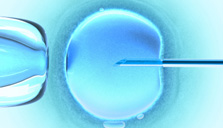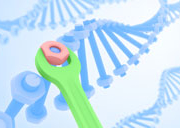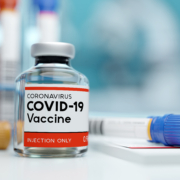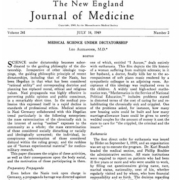How to make a story out of a non-story: hype, hubris and motherless embryos

I did not plan to write a blog on the ‘motherless babies’ story. I assumed that mainstream journalists would read at least some of the detail of new research that has combined sperm with non-egg cells to produce 30 mouse pups that then went on to have healthy offspring themselves, and to report the actual findings reasonably accurately.
However I was proved wrong today when I saw the headlines:
‘The babies with no mothers: Scientists discover how to make embryos from skin cells instead of eggs, making women redundant’ (the Daily Mail)
‘Motherless babies possible as scientists create live offspring without need for female egg’ (The Daily Telegraph)
‘Making babies without eggs may be possible, say scientists’ (The BBC). They even include the headline ‘End of mum and dad?’
‘Skin cells might be used instead of eggs to make embryos, scientists say’ (The Guardian)
Yet the researchers press release and research paper said the following, with my emphases added (bear in mind that the purpose of a press release and conference is to present a simplified version of the research in order to generate headlines):
‘…in the long-term future it could be possible to breed animals using non-egg cells and sperm. Although this is still only an idea, it could have potential future applications in human fertility treatment…’
Perry, lead author, said several times that the future scenarios were: ‘speculative and fanciful’. He also said:
‘…the prospect of using a man’s cells in this way are remote…This is all very speculative and none of it is possible today, and may never be possible.’
Nevertheless, the Financial Times notes that: ‘Dr Perry was happy to speculate about the implications’ at the press briefing.
‘Dr Paul Colville-Nash, from the Medical Research Council (MRC) who funded the work, said ‘This is an exciting piece of research which may help us to understand more about how human life begins and what controls the viability of embryos, mechanisms which may be important in fertility. It may one day even have implications for how we treat infertility, though that’s probably still a long way off.’’
If we then look in more detail at the research itself, we actually find that a crucial detail was left out of the press release and media reports. In fact, the researchers did need egg cells to make the mouse pups they described. They used cells that were made by tricking egg cells into dividing (using, in effect, ‘daughter cells’ of the eggs).
‘[This] does not at all challenge the dogma that both a maternal and a paternal genome are needed for embryonic development in mammals’ says a developmental biologist at McGill University.
In other words, egg cells are still irreplaceable and were involved!
Moreover, this is not particularly novel research. Similar work has been done in the past (eg. Egli et al, 2007 and Kang et al, 2014) but with a crucial caveat, it did not work when tried with humans (a paper by Egli et al in 2011 was headed: ‘Reprogramming within hours following nuclear transfer into mouse but not human zygotes’). Actually, perhaps one novel outcome of the research has been the use of the term ‘parthenogenetic’ (virgin birth) in relation to animals created with sperm!
In essence, this new research ‘is mildly interesting to people who study the nitty-gritty of cell division and fertilization’ says Science, but the reporting has glossed over the significant (insuperable?) technical difficulties with making an embryo without using an egg cell.
For the rest of us, this is more of an open and shut case of hype and hubris.
Some of the blame for the hype must be left at the door of the Science and Media Centre who organised the press conference, issued key quotes and certainly contributed to the hype. Their agenda for many years has been to heavily promote controversial stem cell and embryo research, (seemingly regardless of whether it will actually work) and I guess this research appears to fit their bill.
It seems that they may be regretting it a bit now though. And rightly so, because if scientists are not careful and if they overhype ‘speculative and fanciful’ research too much, the public become more and more skeptical, which then it makes it harder for scientists who have genuinely good research to get the publicity they deserve, especially if it is not headline grabbing enough, and to get public trust back again.
Indeed, in 2009 an open letter was sent to senior editors of peer-review journals publishing in the field of stem cell biology, which was signed by a number of top scientists including Austin Smith, from the University of Cambridge and Shinya Yamanaka, of Kyoto University, Japan. They warned that:
‘Stem cell biology is highly topical and is attracting great interest not only within the research community but also from politicians, patient groups and the general public. However, the standard of publications in the field is very variable. Papers that are scientifically flawed or comprise only modest technical increments often attract undue profile. At the same time publication of truly original findings may be delayed or rejected.’
Of course, if translation of this new research to the clinic might ever become a reality in anything like the way that the media have suggested, the ethical concerns would be manifold and hardly need elaborating on. The research itself involves the manipulation and destruction of embryos (only 30 of 104 embryos survived in this so-called ‘successful’ research), the use of women’s eggs, experimenting with babies and children and messing with parenthood.
But the reality is that ‘two-dad human babies’ are nowhere near a biological reality. Unfortunately this is not the first time we have heard a lot of hype over new research (see here too) that turns out to be underwhelming in terms of both novelty and usefulness. It does however make it harder not to question whether the need for research grants for scientists and profits for biotechnology company shareholders has played a part in this hype. And by the time most people realise how much of the reporting is ‘speculative and fanciful’, the damage is done and the journalists are already onto their next headlines.











Leave a Reply
Want to join the discussion?Feel free to contribute!